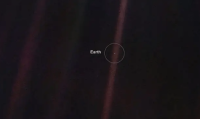Solar activity is cyclical, with a cycle every 11 years, and 2024-2025 will usher in the next peak of solar activity. The Advanced Space-Based Solar Observatory will take advantage of the 25th peak year of solar activity to conduct observations with the scientific goal of “one magnetic and two storms”. “One magnetism” is the sun’s magnetic field, and “two storms” are the two most violent eruptions on the sun – solar flares and coronal mass ejections. The satellite will study the formation, evolution, interaction and interconnection of “one magnetic and two storms”, and provide support for space disaster weather forecasts that affect high-tech activities such as human spaceflight, communication, and navigation.
The Advanced Space-Based Solar Observatory is equipped with three payloads: the All-Solar Vector Magnetic Imager, the Lyman Alpha Solar Telescope and the Solar Hard X-ray Imager. The three payloads cooperate with each other to realize the simultaneous observation of the solar magnetic field, the non-thermal radiation of solar flares, the formation of the solar surface of coronal mass ejections and the propagation of the near-surface on a near-Earth satellite platform. With the help of the Lyman Alpha Solar Telescope, scientists will be able to observe the entire heliosphere and the corona simultaneously for the first time in the Lyman alpha band. The satellite has a design life of 4 years and operates in a sun-synchronous twilight orbit about 720 kilometers above the ground.
According to Gan Weiqun, the chief scientist of the satellite, after the launch of the satellite, they plan to carry out a series of international cooperation. For example, set up an international training to teach international colleagues how to download data, use satellite data, and how to use related software. After the in-orbit test, all satellite data, including software, will be opened to international counterparts in a timely manner to jointly achieve the satellite’s scientific goals.
According to another report, in July 2022, the satellite engineering department will solicit names from the whole country and collect more than 25,000 nominations, one third of which are suggested to be named “Kuafu”, and finally chose to use “Kuafu No. 1” As the name of the satellite, it reflects the Chinese people’s love for the myth of “Kuafu Chasing the Sun” and the mysterious pursuit of the sun. Experts also hope that China’s plan to explore the sun will form a series of “kuafu”.




GIPHY App Key not set. Please check settings